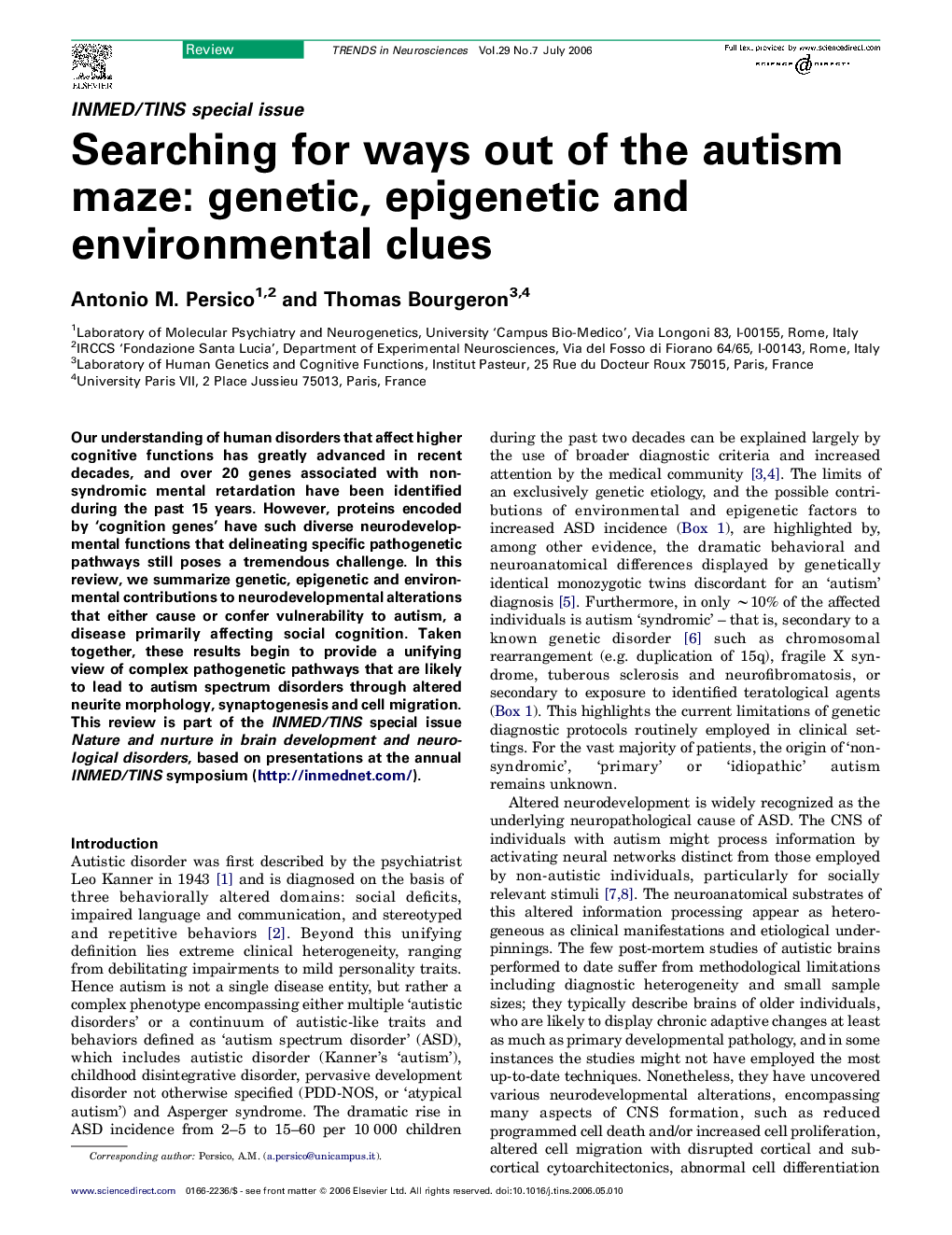| Article ID | Journal | Published Year | Pages | File Type |
|---|---|---|---|---|
| 4354967 | Trends in Neurosciences | 2006 | 10 Pages |
Our understanding of human disorders that affect higher cognitive functions has greatly advanced in recent decades, and over 20 genes associated with non-syndromic mental retardation have been identified during the past 15 years. However, proteins encoded by ‘cognition genes’ have such diverse neurodevelopmental functions that delineating specific pathogenetic pathways still poses a tremendous challenge. In this review, we summarize genetic, epigenetic and environmental contributions to neurodevelopmental alterations that either cause or confer vulnerability to autism, a disease primarily affecting social cognition. Taken together, these results begin to provide a unifying view of complex pathogenetic pathways that are likely to lead to autism spectrum disorders through altered neurite morphology, synaptogenesis and cell migration. This review is part of the INMED/TINS special issue Nature and nurture in brain development and neurological disorders, based on presentations at the annual INMED/TINS symposium (http://inmednet.com/).
